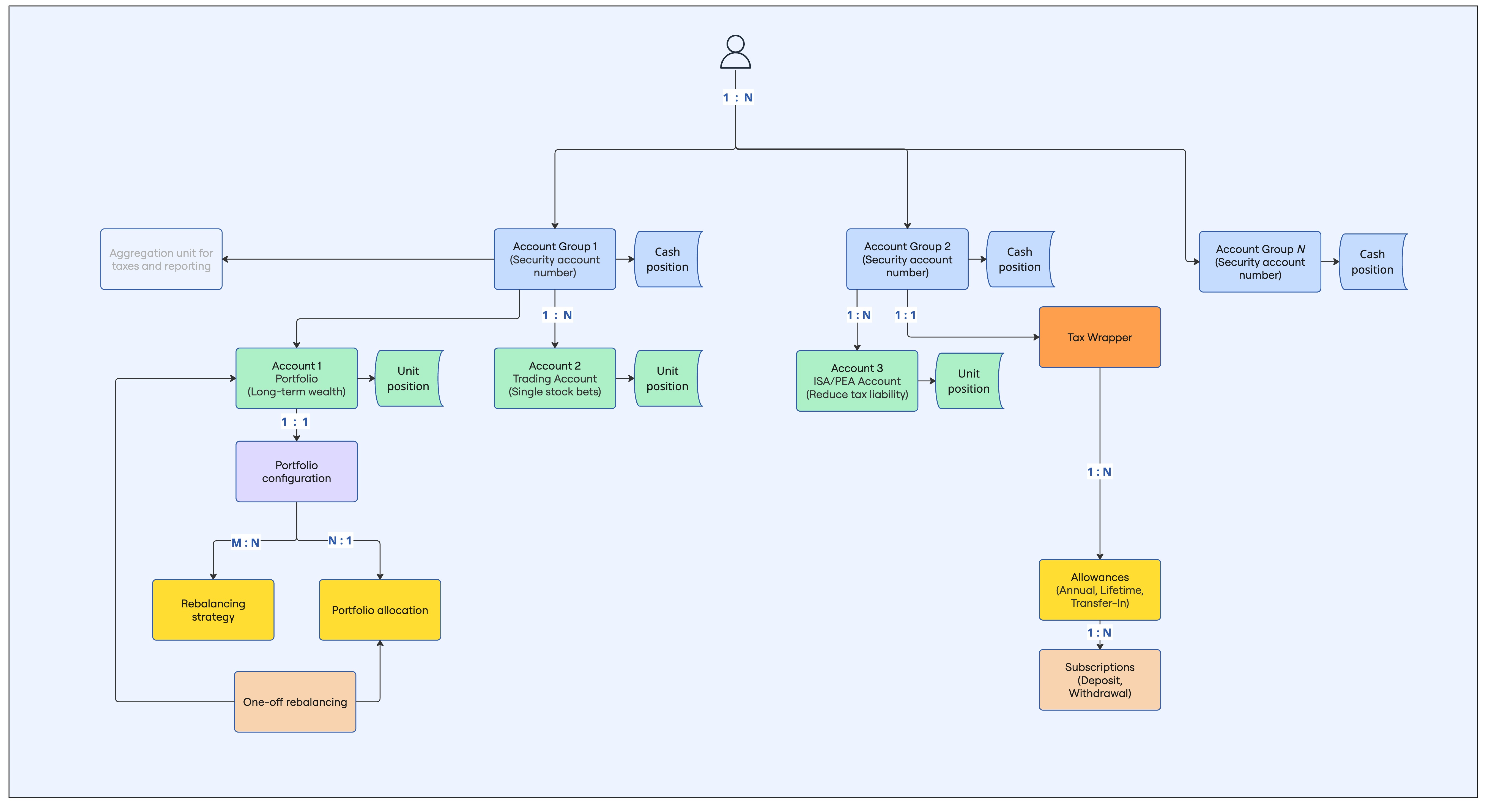Accounts and account groups are central resources in the Investment API. They are linked to the user in a specific hierarchy and are required to carry out processes such as placing orders. Both resources have positions: While account groups hold cash, accounts hold units.
This overview introduces the concepts of accounts, account groups and account types within the Upvest Investment API.

An account group aggregates all accounts within it for tax calculation and regulatory reporting purposes. We assign official security account numbers at the account group level. Account groups hold positions in the form of cash.
Upvest supports a multi-portfolio setup by allowing clients to open more than one account group.
This feature will be activated for you on request, please contact us if you are interested.
Upvest currently supports five (5) different types of account groups. Each account group type covers a key investment area as shown in the table below.
| Account Group Type | Description |
|---|---|
PERSONAL | Account group for portfolio and trading accounts holding assets on the end-user’s own behalf. |
LEGAL_ENTITY | Account group for a legal entity holding assets on behalf of their users. |
FRENCH_PEA | Account group for French residents holding assets in a Plan d'Epargne en Actions (PEA). |
ISA | Account group for UK residents holding assets in an Individual Savings Account (ISA). |
CHILD | Account group for a child user holding assets in a child account. |
An account cannot exist within the Investment API without being associated with an account group. Accounts hold positions in the form of units.
We currently support one type on the account group level, and two types on the account level:
| Account level | Account type | Description |
|---|---|---|
| Account group | PERSONAL | Account group of an individual person holding securities on their own behalf. |
| Account | TRADING | Account allows orders to be placed at instrument level and positions to be queried in the account. |
| Account | PORTFOLIO | Account allows orders to be placed at a portfolio level and positions to be queried in the account. |
Coming soon
More types of account groups such as joint account groups or child account groups will follow soon.